I shall be explaining (very rapidly) the role of Open, Closed, text and data in my talk on Open Crystallography. I shall use a series of diagrams with consistent semiotics.
Before I start I want to make it clear that scientific publishing is not a zero cost activity. I am not waving hands here, I am basing this on models that work. There may be major difficulties to change en masses but that is not the same as being woolly-headed and naïve. And I know it takes time and I am impatient. However academic scientific research is a 100 billion -> 1000 billion USD industry and the money is in there. It is a question of re-orienting it.
Here is the traditional publication model, without data. A piece of fulltext is published and the reader (usually through their library) pays. Individual subscribers can pay 40 USD per day for 1 article.
This discussion is orthogonal to peer-review (please don’t complicate it by involving PR – ALL the diagrams can have PR or NO-PR). It is also slanted towards crystallography
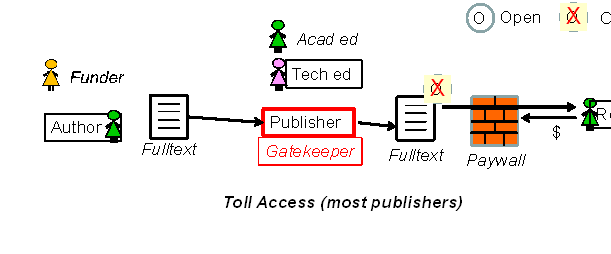
The components:
- The funders fund the authors to do the research and publish fulltexts and data
- The publisher decides whether and how to publish the paper (Gatekeeper)
- The publisher uses a paywall to restrict access
- The reader inputs money, reads fulltexts and data, but has no other say
- Open means OKDefiniiton compliant. Anything else is closed
Gatekeepers
Most aspects of publishing are infinitely discussed, but the role of gatekeeper is critical here. The gatekeeper has complete and aribitrary say over what happens. The GK can restrict and filter input and can bar access. In the modern world GKs are frequently
- In conflict with emerging ideas of web-democracy
- Conservative
- Self-serving; i.e. the operation is run for the benefit of gatekeepers and not the authors or the readers
In general most gatekeepers outlive their usefulness

Here the publisher arbitrarily refuses to publish data (no examples from crystallography)

Here the publisher accepts data and publishes it on their website, generally without any restrictions (effectively Open)
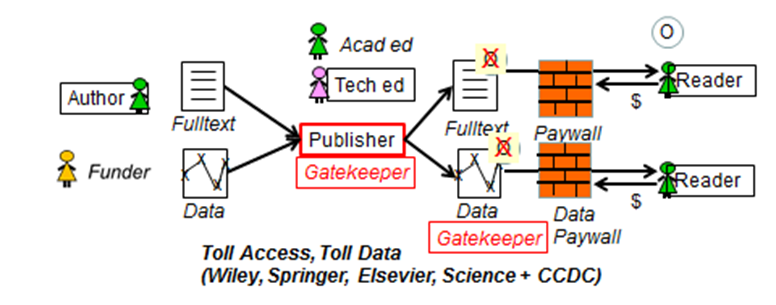
The publisher publishes the data to a closed repository run by another Gatekeeper. There may or may not be an agreement between the gatekeepers. The reader has paywalls and permission walls for both components. Nothing is Openly reusable.

The authors pays an Open Access charge (normally “GoldOA”) and the publisher makes the text Openly accessible. Note that the publisher is still a gatekeeper in all other respects.
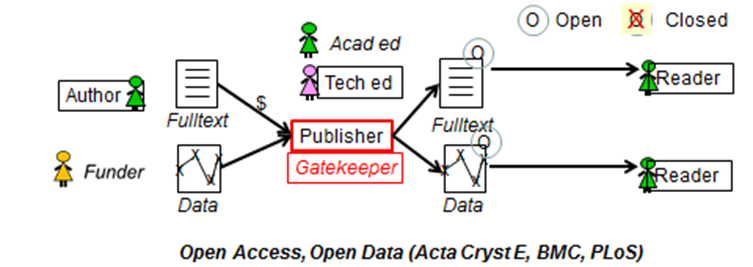
The OA model with data on publishers site
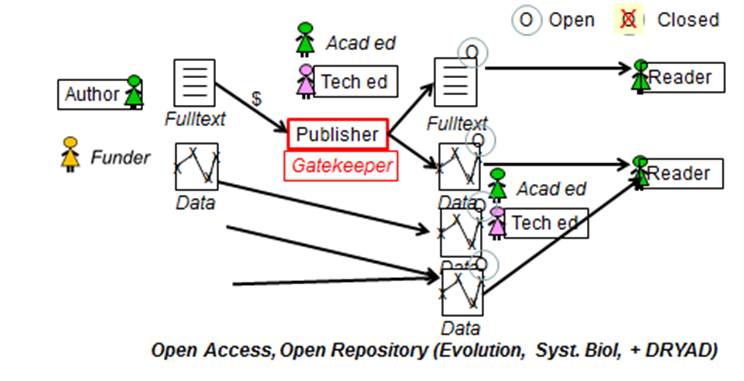
The authors or publishers put the data in a domain-specific repository (e.g. DRYAD, Tranche, PDB). Anyon can re-use the data. Funding models are variable (e.g. pay for deposit or grant)
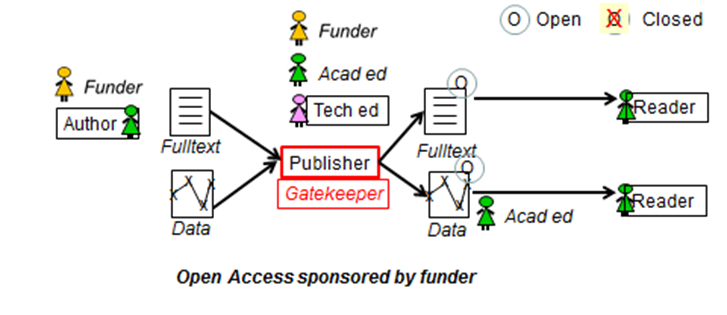
The funder pays for the publication (e.g. Wellcome/HHMI/MPI journal). The funder may have input into gatekeeping
And finally the models emerging from the web culture
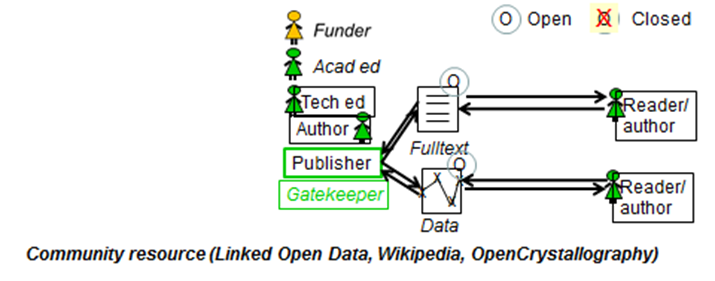
Here the readership, authorship and publishing mechanism merge into a meritocracy. There is still a need for gatekeeping, but decided by the community.
Tomorrow I will post a synopsis of my talk and give links